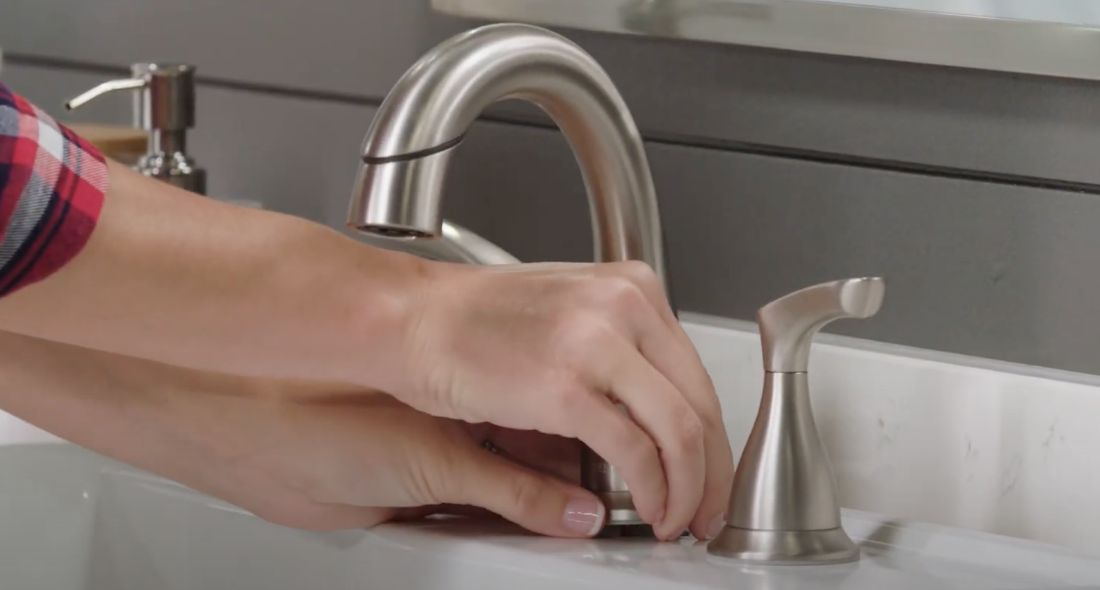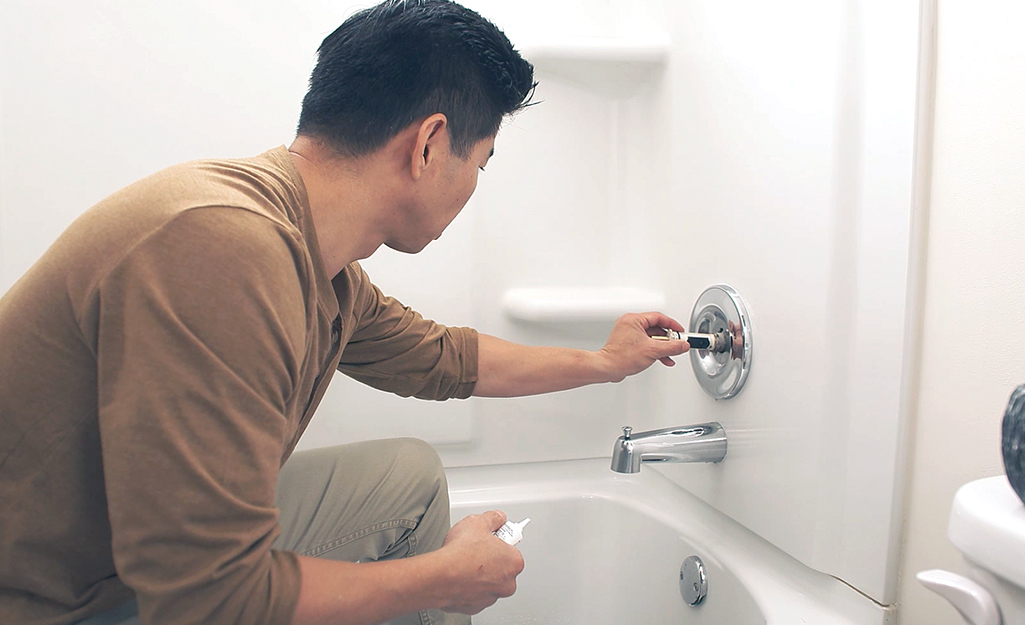What It's Essential to Resolve a Broken Faucet
What It's Essential to Resolve a Broken Faucet
Blog Article
Just how do you really feel in regards to Why It's Important to Fix Leaky Faucets?

Leaking faucets may feel like a minor aggravation, yet their influence exceeds simply the inconvenience of the noise. From drainage to incurring unneeded economic costs and health and wellness threats, ignoring a trickling faucet can bring about various effects. In this article, we'll look into why it's crucial to address this usual house concern quickly and effectively.
Waste of Water
Environmental Impact
Leaking faucets contribute significantly to water wastefulness. According to the Epa (EPA), a solitary faucet leaking at one drip per secondly can lose greater than 3,000 gallons of water each year. This not just strains water sources but also influences communities and wild animals dependent on them.
Financial Costs
Boosted Water Bills
Past the environmental influence, leaking faucets can pump up water expenses considerably. The collected waste in time converts right into greater utility costs, which could have been stayed clear of with timely fixings.
Possible Home Damage
Furthermore, prolonged trickling can result in harm to fixtures and surfaces surrounding the faucet. Water build-up can trigger staining, corrosion, and even structural concerns if left neglected, resulting in added repair prices.
Health Problems
Mold and Mold Growth
The consistent visibility of dampness from a trickling faucet produces an ideal setting for mold and mildew development. These fungi not just endanger interior air high quality but additionally pose wellness risks, particularly for people with respiratory problems or allergic reactions.
Waterborne Conditions
Stationary water in leaking taps can become a breeding ground for germs and other virus, increasing the risk of waterborne illness. Pollutants such as Legionella microorganisms thrive in stagnant water, potentially leading to serious diseases when consumed or breathed in.
DIY vs. Professional Repair
Pros and Cons of DIY Repair
While some might try to deal with a leaking faucet themselves, do it yourself fixings come with their own collection of difficulties. Without correct understanding and tools, DIY attempts can intensify the concern or lead to incomplete repair work, extending the problem.
Advantages of Hiring a Specialist Plumber
Working with a specialist plumber makes sure that the underlying cause of the leaking faucet is addressed effectively. Plumbing technicians have the knowledge and devices to detect and fix faucet issues effectively, conserving time and decreasing the threat of further damage.
Step-by-Step Overview to Fixing a Dripping Tap
Tools Called for
Before attempting to deal with a leaking faucet, gather the needed tools, consisting of an adjustable wrench, screwdrivers, substitute parts (such as washing machines or cartridges), and plumber's tape.
Typical Tap Issues and Their Solutions
Identify the kind of tap and the particular problem causing the drip. Common problems include damaged washing machines, rusty valve seats, or defective O-rings. Describe producer directions or on the internet tutorials for detailed guidance on repairs.
Preventive Measures
Routine Maintenance Tips
To avoid dripping faucets, do routine maintenance such as cleaning up aerators, evaluating for leakages, and replacing worn-out components immediately. Additionally, take into consideration setting up water-saving devices or upgrading to extra efficient components.
Value of Prompt Repair Works
Attending to dripping faucets as quickly as they're seen avoids additional water wastefulness and potential damages, ultimately conserving both water and money in the future.
Impact on Home Value
Understanding of Well-Maintained Residential Or Commercial Property
Keeping a residential property in good condition, including dealing with upkeep problems like leaking taps, boosts its regarded value and charm among prospective buyers or occupants.
Influence on Resale Worth
Residences with well-kept plumbing components, including faucets, command higher resale worths in the real estate market. Addressing trickling taps can add to a favorable perception during building assessments and settlements.
Ecological Duty
Individual Contribution to Preservation
Taking obligation for fixing leaking faucets aligns with wider initiatives toward water conservation and ecological sustainability. Every individual's activities collectively make a significant effect on preserving precious sources.
Lasting Living Practices
By focusing on punctual repairs and embracing water-saving practices, individuals add to sustainable living methods that profit both existing and future generations.
Conclusion
Addressing a trickling tap exceeds plain ease; it's a vital step toward preserving water, minimizing monetary expenses, and safeguarding health and residential or commercial property. Whether via do it yourself repair work or expert aid, acting to fix leaking taps is a little yet impactful means to promote accountable stewardship of resources and contribute to a healthier, a lot more sustainable future.
How to Fix a Leaky Faucet: Step-by-Step Repair Guide
A leaky faucet may seem like a simple annoyance, but if it's not fixed promptly, that leak could cost hundreds to potentially thousands. From water damage to mold, mildew, and high water bills, even a tiny leak can be catastrophic if left unattended. Damage like this can even affect the overall value of your home, so it's important to take the right approach for leaky faucet repair. You may need the help of a plumber in some cases, but we've got a few tips you can try on how to fix a leaky faucet before calling the pros.
Four Faucet Types
When you're learning how to fix a leaky faucet, the first step is knowing what kind of faucet you're working with! There are four common types.
Cartridge Faucets
Cartridge faucets come in one- or two-handled varieties. In one-handled cartridge faucets, hot and cold water combines in a single cartridge. In the two-handled versions, hot and cold water are controlled separately and mixed in the faucet.
Ball Faucets
Ball faucets have a single lever you push up and down to adjust the pressure and rotate to change the temperature. A slotted metal ball controls the amount of water allowed into the spout.
Compression Washer Faucets
They're the oldest type of faucet, but they're still used in many homes — especially older ones. Compression faucets have two separate handles that, when turned, raise or lower the washer that seals a water valve. This valve stops water from flowing through the faucet when it is turned off.
Disc Faucets
Disc faucets rarely need to be repaired due to their maintenance-free design. The water flow is controlled by two discs — the upper one raises and lowers against a fixed lower disc, creating a watertight seal. If your disc faucet starts leaking, you may need to replace the seals or clean residue buildup from the inlets.
Fixing a Leaky Faucet
Step 1: Turn Off the Water
Whether you're learning how to fix a leaky bathtub faucet or how to fix a leaky kitchen faucet, always turn off the water supply to your working area when you're fixing a leak. The last thing you want is a flood added to your list of things to fix.
Look for the shutoff valves below your sink or around the tub and turn them clockwise to stop the water flow. If your faucet doesn't have shutoff valves, you may need to turn off the water for the whole house. Check to make sure it's off by turning the faucet on. If nothing comes out, you're ready to start the repair.
Step 2: Take Apart the Faucet
How you disassemble your faucet depends on the type of fixture you have. You can use a flathead screwdriver to remove the caps on top of the handle or handles for cartridge and compression faucets. Inside, you should see handle screws. Unscrew these with a screwdriver to remove the handle.
Disc- and ball-style faucets will typically have an inlet screw near the handle, and removing that will reveal the interior of the faucet.
Detach the Valve Stem
For cartridge- and compression-style faucets, you'll see the inner valve stem or cartridge once you remove the faucet handles. If you have a compression faucet, unscrew the brass valve stem. If you have a cartridge faucet, pull out the cartridge. If your cartridge has been in place for a while, it may require some tools or extra force to remove it due to mineral deposits.
Examine and Replace Parts
Once you've removed the parts, check them out to confirm what needs to be replaced. You may see corroded rubber washers, O-rings, stems, or cartridges. On a ball-style faucet, check the seats and springs for damage.
If you need to repair a leaky disc faucet, check the inlet and seals on the lower disc.
Once you determine what parts must be replaced, visit your local hardware store. Bring the damaged parts with you to ensure you can purchase the correct components to replace them.
Clean Valves and Faucet Cavity
If you've removed a stem or cartridge, you may notice mineral buildup in the faucet's threads. Use white vinegar to clean the valve seat by soaking it for a few minutes, then scrub it away with a soft toothbrush and rinse with warm water. You can also clean the interior of the faucet in the same way.
Reassemble the Faucet
Once your faucet is cleaned and the required parts have been replaced, it's time to reassemble it. Put the pieces back together and slowly turn the water supply back on. Doing this slowly is crucial because too much initial water pressure can damage the new hardware you've just installed.
https://homewarranty.firstam.com/blog/how-to-fix-leaky-faucet

As a passionate reader about What Causes Leaky Faucets & How To Fix Them, I imagined sharing that piece of writing was a smart idea. Remember to pause to share this write-up if you appreciated it. Thanks for being here. Return soon.
Report this page